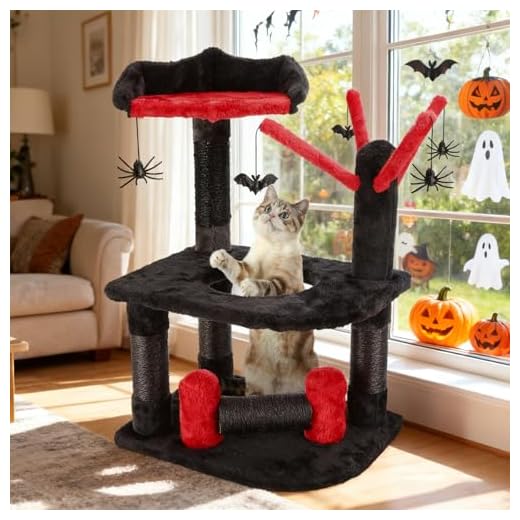

Observations reveal a curious trend: the general aversion towards certain furry companions. As a seasoned Scottish Fold with a penchant for sharing insights, I’ve noticed that the sleek, midnight-hued companions often face unwarranted bias. Historical superstitions and cultural narratives play a significant role in shaping perceptions.
Research indicates that in various cultures, these charming creatures have been unfairly linked to misfortune or negative omens. For instance, in medieval Europe, dark-coated companions were often associated with witchcraft, leading to a stigma that persists today. Yet, statistics show that these animals can be just as affectionate and playful as their lighter counterparts.
For those considering adoption, it’s crucial to challenge these misconceptions. Engaging with local shelters and fostering relationships with these misunderstood companions can reveal their true nature. Embracing diversity within the feline community enriches our lives and dispels myths surrounding their temperament.
Perceptions Surrounding Dark Felines
It’s fascinating how some individuals hold onto outdated beliefs about certain fur colors. Those with a deeper shade often carry unwarranted stigmas tied to folklore and superstition. Research shows that in various cultures, darker companions have been associated with misfortune or bad luck, which is simply not the case.
Statistics indicate that shelters report lower adoption rates for these elegant creatures. In fact, some studies suggest they can wait up to 30% longer for a forever home compared to their lighter counterparts. This discrepancy arises from preconceived notions rather than any actual behavioral differences.
Engaging with communities can help shift these perceptions. Hosting awareness campaigns or sharing heartwarming stories featuring these graceful beings can highlight their affectionate nature. Encouraging others to interact with them may reveal their playful and loving personalities, dispelling any myths surrounding them.
In the end, fostering understanding and appreciation for all fur colors is key. Highlighting the unique qualities and charm of these lovely companions can lead to a more inclusive perspective. Every feline deserves a chance, regardless of their coat color.
Historical Superstitions Surrounding Black Cats
Throughout history, various cultures have viewed darker felines with a mix of fascination and fear. In medieval Europe, these sleek companions were often associated with witchcraft. Many believed that witches could transform into these creatures, leading to widespread persecution during witch hunts. This association painted a grim picture, marking them as harbingers of misfortune.
In ancient Egypt, however, the narrative shifts dramatically. Revered for their hunting skills, these animals were symbols of grace and protection. Killing one was seen as a grave offense, punishable by death. This reverence starkly contrasts with the later European perceptions, highlighting how cultural context shapes beliefs.
In the United States, the arrival of these animals also came with superstitions. The notion that encountering one could foreshadow bad luck became prevalent during the 19th century. Ironically, in certain regions, these creatures were considered good luck, especially if they crossed one’s path. This duality in beliefs continues to influence how many perceive them today.
| Culture | Belief About Black Cats |
|---|---|
| Medieval Europe | Witches in disguise, bringers of misfortune |
| Ancient Egypt | Symbols of protection and grace, revered |
| United States | Bad luck or good luck, depending on the region |
Despite the superstitions, owning a companion animal brings joy and comfort. To maintain their health, consider using dental powder for cats for optimal dental care.
The Impact of Cultural Beliefs on Perception
Understanding how cultural beliefs shape opinions about certain felines is crucial. Various communities harbor unique traditions that can influence their views. For instance, in some cultures, these creatures symbolize prosperity and good fortune, while in others, they evoke fear or superstition.
Here are some key influences:
- Folklore: Many tales depict these creatures as witches’ companions, leading to negative associations.
- Regional Variations: In certain regions, positive attributes are attributed, contrasting sharply with areas where fear prevails.
- Media Representation: Movies and literature often reinforce stereotypes, perpetuating biases through portrayals of misfortune.
- Traditions and Rituals: Specific customs may regard these animals as omens, shaping perceptions across generations.
Addressing these misconceptions involves education and awareness. Promoting positive stories and highlighting the affectionate nature of these creatures can help reshape narratives. Sharing personal experiences and fostering community discussions can also encourage a shift in attitudes.
Engagement through social platforms can further amplify these efforts. By sharing heartwarming stories and showcasing the personalities of these animals, it’s possible to challenge outdated beliefs and inspire a more inclusive perspective.
Media Representation and Its Effects on Attitudes
To shift perceptions, focus on how various media portray felines with dark fur. Films, television shows, and literature often depict them as mystical or ominous creatures. This depiction influences public sentiment, leading to unfair biases.
Analysis of Popular Media
- Classic fairy tales often associate shadowy felines with witchcraft, reinforcing negative stereotypes.
- Modern films, while sometimes offering positive roles, frequently revert to the trope of the sinister companion.
- Social media, while showcasing the beauty of all breeds, can still perpetuate myths through memes and jokes.
Recommendations for Positive Change
- Encourage creators to depict dark-coated companions in positive roles, highlighting their charm and playful nature.
- Share heartwarming stories on platforms to counteract negative stereotypes.
- Support initiatives aimed at educating the public about the true nature of these animals.
By actively changing the narrative, it’s possible to foster a more inclusive attitude towards these delightful companions. Check out best backpack accessories for your adventures together!
Psychological Factors Influencing Fear of Dark Felines
Many individuals associate ominous traits with dark-hued companions, driven by deep-rooted psychological factors. The concept of the “other” plays a significant role; those who differ from the norm often evoke apprehension. This instinctual response can be traced back to evolutionary survival mechanisms, where unfamiliarity posed potential threats.
Additionally, cognitive biases contribute to distorted perceptions. Confirmation bias leads individuals to focus on negative experiences or tales surrounding shadowy creatures, reinforcing their fears. A single encounter or story can shape a long-lasting prejudice, overshadowing positive interactions.
Fear Conditioning and Its Effects
Fear conditioning further complicates attitudes toward these animals. Repeated exposure to negative stimuli associated with dark companions can create an automatic fear response. This learned behavior, often unconscious, influences how one reacts upon seeing a dark feline, regardless of its demeanor.
Societal Influences and Peer Pressure
Social dynamics amplify these sentiments. Peer pressure can shape opinions, leading some to adopt prevailing attitudes without critical examination. When a group collectively expresses disdain for shadowy companions, individuals may conform to avoid social rejection, perpetuating a cycle of negativity.
Addressing these psychological factors requires conscious effort. Encouraging positive narratives and fostering direct experiences with dark-hued friends can gradually shift perceptions. Communication and education about their true nature can dismantle long-standing biases and promote a more inclusive viewpoint.
Comparative Analysis of Pet Adoption Rates for Dark-Furred Felines
Statistics reveal a significant disparity in the adoption rates of dark-furred felines versus their lighter-coated counterparts. Research indicates that shelters report up to 30% lower adoption rates for these elegant creatures. This trend persists across various regions, suggesting a widespread bias that transcends local cultures.
A 2022 survey conducted by the Animal Welfare Institute found that while lighter-hued pets were adopted at a rate of 70%, only 40% of dark-coated animals found new homes. This stark contrast highlights the need for targeted campaigns that showcase the unique personalities and charm of these often-overlooked companions.
Programs aimed at increasing visibility for dark-hued pets have shown promise. For instance, promotional events featuring discounted adoption fees for darker furred companions resulted in a 25% increase in their adoption within a three-month period. This demonstrates the effectiveness of strategic marketing in altering perceptions and driving positive outcomes.
Additionally, anecdotal evidence from shelters suggests that fostering a community of advocates who share their experiences with dark-furred companions can significantly impact adoption trends. Social media campaigns that highlight success stories encourage potential adopters to reconsider their biases and embrace the beauty of all felines.
In conclusion, addressing the evident bias against dark-furred companions through strategic outreach and community engagement is essential. By showcasing their unique qualities and creating more inclusive adoption events, we can work towards ensuring that every feline, regardless of coat color, receives the loving home they deserve.
Strategies to Change Negative Perceptions of Black Cats
Encouraging adoption events specifically showcasing ebony felines can create positive interactions. Highlight their unique personalities through social media campaigns that feature heartwarming stories and photos, emphasizing their playful and affectionate nature.
Community Engagement and Education
Organize workshops at local shelters focusing on debunking myths and sharing facts about these charming companions. Collaborate with schools to educate children, instilling appreciation from a young age. This approach fosters understanding and combats prejudice.
Positive Media Representation
Partner with influencers and content creators to showcase these beautiful creatures in a favorable light. Use videos, memes, and articles to spread uplifting messages, countering negative stereotypes. Highlight real-life adoption success stories to inspire others to consider these deserving pets.








